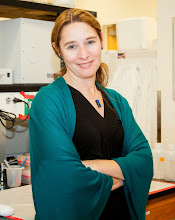I just attended the mid-winter meeting of the Association for Research in Otolaryngology, which is the big conference in my field (basically, hearing-related research). I heard some great research talks, and some not-so-great talks, which is pretty typical for a conference. While I won't single anyone out, the great talks all had one thing in common - enthusiasm! Whether a high-ranking professor or a new graduate student, the talks given with enthusiasm and passion all caught my attention.
Speaking about Science...the blog about how to communicate scientific concepts to the public, and to other scientists, and about why we should care.
About Me

- Allison Coffin, PhD, DTM
- I'm an assistant professor of neuroscience at Washington State University in Vancouver, where I use tiny zebrafish (the size of an eyelash!) as a model system to study human hearing loss and how we can prevent it. I'm also a long-time Toastmaster and I teach communication workshops. This blog represents the merging of my two passions - science and communication, which has really become one central passion - the science of communication. There's a revolution in science right now...the idea that we scientists should sometimes leave the lab and talk about what we do, and why we do it, to real people. This blog looks at why we should do this, and how to actually talk about science with non-scientists (and with each other!). Portions of this blog are also featured on Qualia, the AAAS MemberCenter blog site.
Saturday, February 26, 2011
Sunday, February 6, 2011
Fight those filler words
Whether it’s a scientific talk or a wedding toast, what we say is important. Just as important, though, is what we don’t say. Filler words-those “ums”, “ahs”, “likes” and “you knows”, take power away from our words, as the audience fights to stay on course, to understand our message, while dodging filler word obstacles.
Subscribe to:
Posts (Atom)